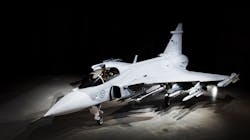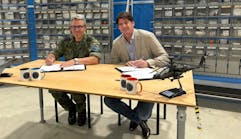RUAG International Starts Series Production of Payload Suspensions for the Saab Gripen E/F
After six years of development and industrialization and a number of prototypes produced, RUAG Aerostructures in Emmen (Switzerland) reached a significant milestone at the end of August with the final acceptance of the airworthiness test for the first payload suspension (pylon).
With the successful completion of the Airworthiness Review of the first production pylon for the Saab Gripen E/F, serial production can now start with a total scope of more than 500 pylons. The pylons are used in aircraft of the Swedish and Brazilian Air Force. The total order signed at the end of 2015 has a volume of over CHF 80 million.
Payload suspensions are devices designed to carry additional fuel tanks, reconnaissance systems or guided missiles. They are complex technological components containing both electronic and mechanical systems. They must meet the highest requirements with regard to aerodynamics and load capacity.
Up to ten pylons can be attached to Gripen E/F, of which RUAG manufactures eight. A large portion of the individual parts for the four pylon types are manufactured in Emmen itself, including surface treatment and crack testing. After demanding final assembly and comprehensive functional tests, the assemblies will be delivered to the end customer in Sweden. Pylon 1, which is located at the end of each wing, is produced by Saab itself.
Dirk Prehn, executive vice president of RUAG Aerostructures, stated, "With the successful acceptance of the first serially manufactured pylon, we have reached an important milestone. It also marked a long and successful partnership between two leading companies in the aerospace sector.”
Hans Häggrot, head of airframe development, Saab Business Area Aeronautics stated, “Over the last 6 years we have worked very successfully with RUAG Aerostructures on the development and manufacture of the pylons. The payload pylons on Gripen E/F are a key component of the new aircraft's broad operational capability."



